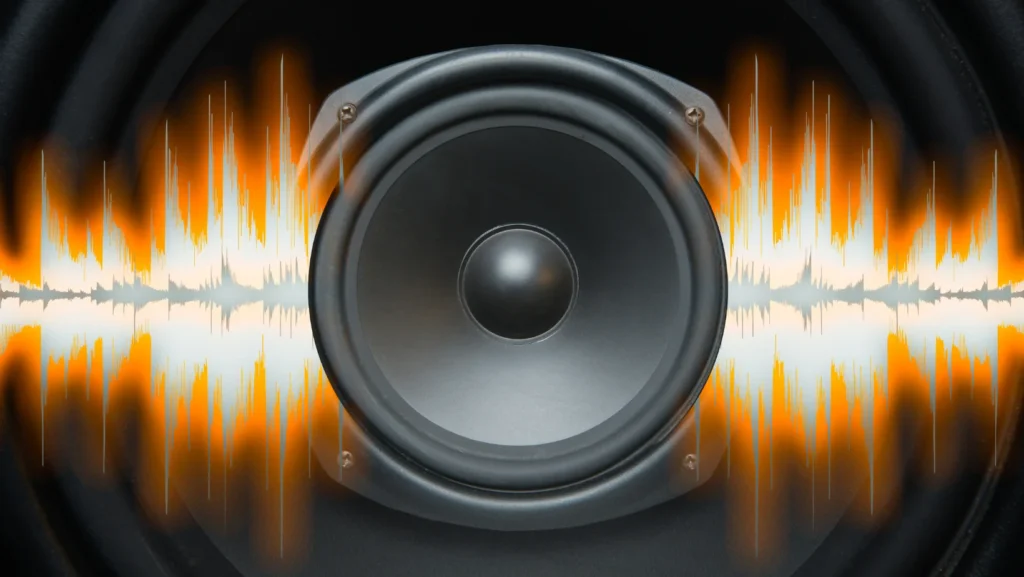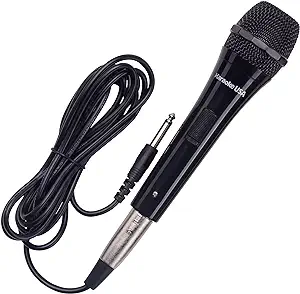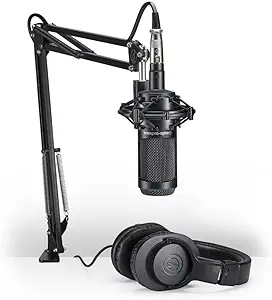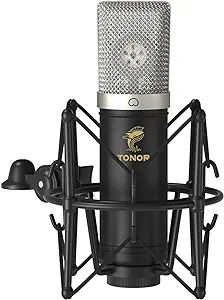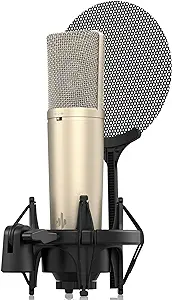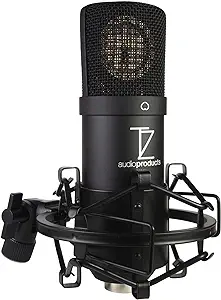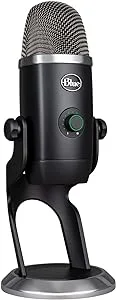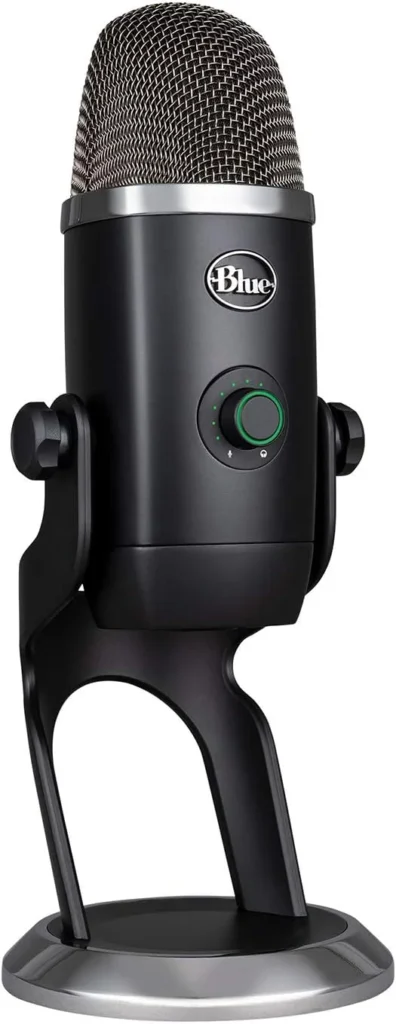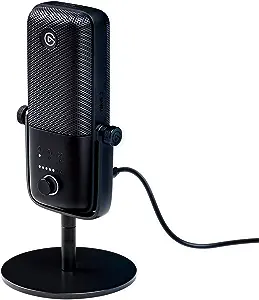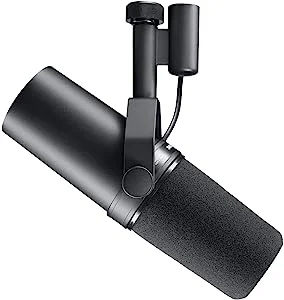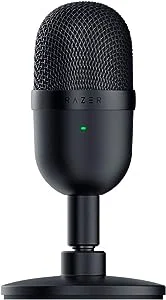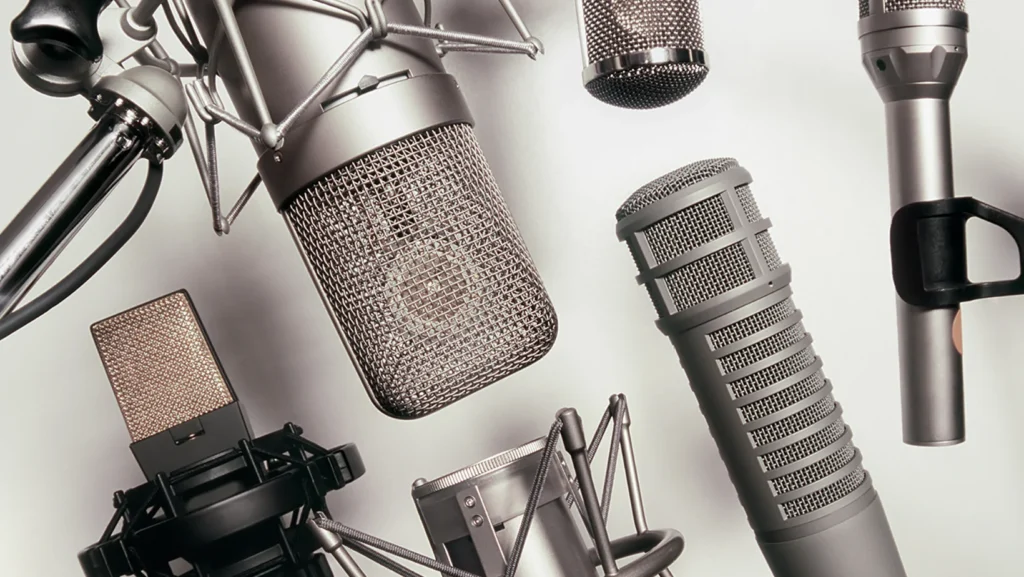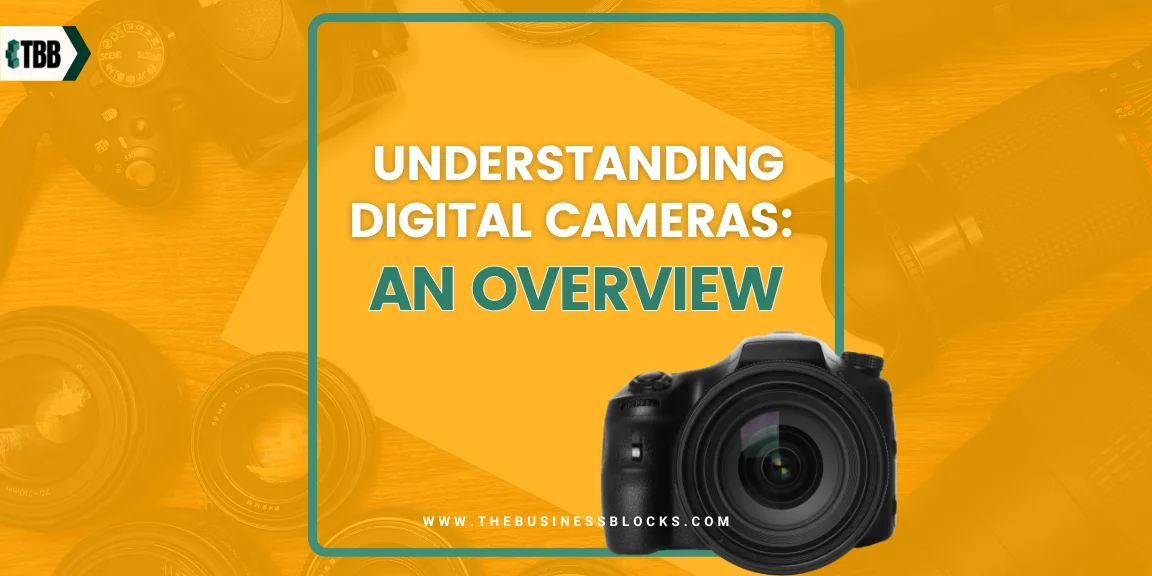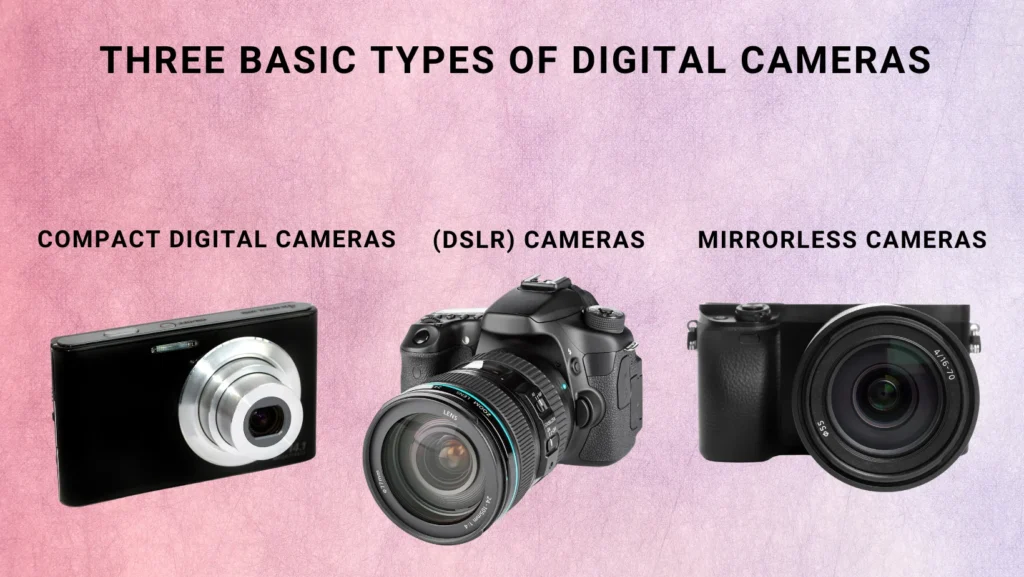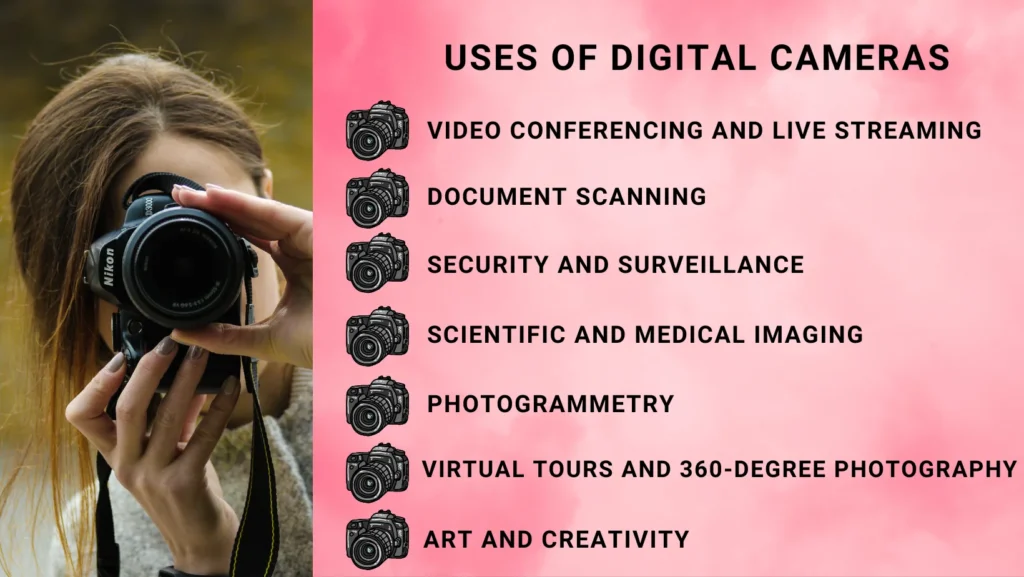Step into the future of office audio with our exclusive guide to the Top 10 Wireless Speaker Systems designed for unparalleled flexibility in modern workspaces. In today’s dynamic corporate landscape, adaptability is the name of the game, and these state-of-the-art speaker systems offer the perfect harmony of convenience, functionality, and style. From boardroom presentations to team collaborations and everything in between, these innovative devices are poised to revolutionize the way you experience sound in the office.
Join us as we explore the ultimate selection of wireless speakers that not only deliver crystal-clear audio but also seamlessly integrate into any office environment, empowering you to unleash your team’s full potential while enhancing the ambiance of your workspace. Get ready to amplify productivity and creativity like never before as we embark on a journey through the top wireless speaker systems tailored for the modern workplace.
Are you tired of dealing with tangled wires and limited mobility in your office audio setup?
Imagine the convenience of seamlessly streaming music or hosting virtual meetings without being tethered to a specific spot. These cutting-edge speaker systems offer unparalleled flexibility, allowing you to create the perfect audio environment for any task or occasion.
With sleek designs and advanced features, these speakers are not just about convenience but elevating your office experience. Picture your team collaborating effortlessly with crisp, clear sound filling the room, or setting the mood for focused work with your favorite playlists at your fingertips.
Don’t let outdated audio technology hold your office back. Upgrade to one of our top wireless speaker systems today and unlock the true potential of your workspace.
Introduction to Wireless Speaker Systems in the Modern Office
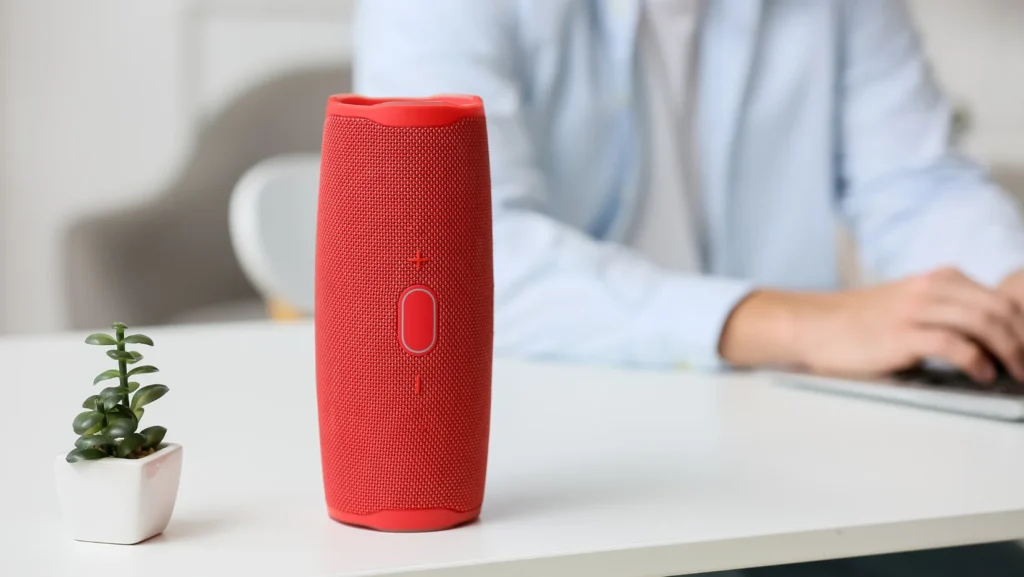
In the ever-evolving landscape of modern office environments, the integration of cutting-edge technology has become paramount to fostering productivity, collaboration, and employee satisfaction. Among the myriad advancements revolutionizing the workplace, wireless speaker systems stand out as a game-changer in enhancing the auditory experience.
Gone are the days of cumbersome wires and limited mobility tethering employees to specific areas of the office. Today, wireless speaker systems offer a seamless solution, providing the flexibility to adapt to various tasks and settings within the workspace.
These speaker systems utilize wireless technology, such as Bluetooth or Wi-Fi, to transmit audio signals from various devices (such as computers, smartphones, or tablets) without the need for physical cables.
In the modern office setting, these wireless speaker systems offer several advantages:
Flexibility
Employees can easily move these speakers around the office, rearrange workspace layouts, or set up impromptu meetings without the constraints of wired connections.
Convenience
With wireless connectivity, users can quickly connect their devices to the speaker system, eliminating the need for complex setups or troubleshooting tangled wires.
Integration
Many wireless speaker systems are designed to seamlessly integrate with other office technologies, such as conference room equipment, collaboration tools, and smart devices, enhancing overall efficiency and productivity.
Enhanced Collaboration
These speaker systems facilitate collaboration by providing clear, high-quality audio for virtual meetings, presentations, and group discussions, regardless of where participants are located within the office.
Aesthetics
Wireless speaker systems often feature sleek and modern designs that complement contemporary office decor, contributing to a more visually appealing workspace.
Understanding Wireless Speaker Systems
Wireless speaker systems are audio devices that use wireless technology to receive audio signals from a source device, such as a smartphone, tablet, or computer, and reproduce sound without the need for physical cables. These systems typically consist of one or more speakers, a transmitter or receiver unit, and built-in amplification components.
How Wireless Speaker Systems Work:
- Signal Transmission: The audio signal is transmitted wirelessly from the source device to the wireless speaker system. This transmission is facilitated through technologies such as Bluetooth, Wi-Fi, or proprietary wireless protocols.
- Receiver Unit: The wireless speaker system includes a receiver unit that receives the transmitted audio signal. This unit may be built into the speakers themselves or be a separate component connected to the speakers.
- Decoding and Processing: Once the audio signal is received, the receiver unit decodes and processes the signal to extract the audio information. This may involve decompressing digital audio files or converting analog signals into digital format.
- Amplification: The processed audio signal is then sent to built-in amplification components within the wireless speaker system. These components amplify the signal to drive the speakers and produce sound at the desired volume level.
- Speaker Output: Finally, the amplified audio signal is sent to the speakers, where it is converted into sound waves that are radiated into the surrounding environment. The speakers may include drivers for different frequency ranges, such as tweeters for high frequencies and woofers for low frequencies, to reproduce a full range of audio frequencies accurately.
Our Pick: Top 10 Wireless Speaker System

Join us as we navigate through the top 10 wireless speaker systems meticulously curated to provide unparalleled flexibility, functionality, and versatility in office environments. Welcome to the future of office audio – let’s dive in!
1. Audioengine A1-MR
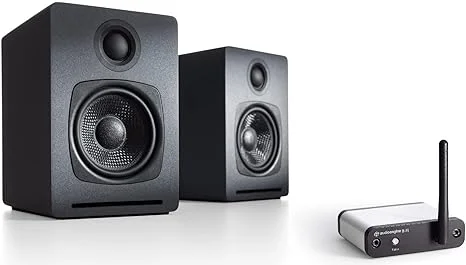
First on our pick is the Audioengine A1-MR Multiroom Home Music System B-Fi Multiroom Music Streamer, your gateway to premium wireless sound and seamless home audio integration. Here’s why it’s a must-have for any music enthusiast:
Premium Wireless Sound:
The A1-MR delivers high-fidelity, wireless music streaming anywhere in your home. With its ability to easily stream from any Wi-Fi-connected device and support for all streaming apps, you can experience fully immersive, true stereo sound in any room.
Impressive Specs:
Precision-tuned, hand-crafted cabinets house powerful components including 2 3/4″ aramid fiber woofers and 3/4″ silk dome tweeters. With a power output of 60W peak total and a frequency response of 65Hz-22kHz, the A1-MR outperforms the competition. Plus, the LFE variable line-out allows for easy addition of a subwoofer for deeper bass extension.
User-Friendly App, Total Control:
Take control of your music with the free Audioengine Control app. Connect to your home WiFi network using your iOS or Android device and enjoy seamless control of your music from anywhere in your home. Easily jump between stations, playlists, and services, and play different songs in different rooms or the same song in every room.
Multiroom Listening:
Expand your home audio system effortlessly by adding additional B-Fi streamers or A1-MRs. With independent zones and volume control, you have full command over your music. Play any song from any service in any room, or synchronize playback across all rooms for a truly immersive listening experience.
PROS
- High-Fidelity Audio.
- Seamless Integration.
- Multiroom Functionality.
- User-Friendly App.
- Versatile Connectivity.
CONS
- Price.
- Dependency on WiFi Network.
- Complex Setup.
Experience the ultimate in-home audio flexibility and quality with the Audioengine A1-MR Multiroom Home Music System B-Fi Multiroom Music Streamer. It’s time to elevate your listening experience to new heights.
2. JBL Boombox 3
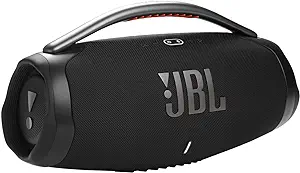
Introducing our 2nd pick which is the JBL Boombox 3 Black Portable Bluetooth Speaker: your ultimate companion for immersive sound experiences on the go. Here’s why it’s a must-have for music lovers everywhere:
Massive Sound and Deepest Bass:
Get ready to be blown away by the JBL Original Pro Sound. With 3-way speakers delivering higher sensitivity and sharper clarity, you’ll experience monstrous bass and a rich audio spectrum at any volume level.
Waterproof Design:
From poolside parties to outdoor adventures, the JBL Boombox 3 is built to withstand the elements. With an IPX7 waterproof rating, it can handle splashes, rain, and even a dip in the water with ease.
24 Hours of Playtime:
Keep the party going all day and all night with an impressive 24 hours of battery life. Whether you’re starting your day with a workout or winding down with friends, the Boombox 3 has you covered.
Strong, Bold Design:
Not only does the Boombox 3 deliver powerful sound, but it also makes a statement with its sleek design. Featuring twin sidecaps and a sturdy metal handle with an eye-catching orange silicone grip, it’s as stylish as it is functional. Plus, JBL’s commitment to sustainability means it comes in recyclable packaging, making it an eco-friendly choice.
PROS
- Powerful Sound.
- Long Battery Life.
- Waterproof and Durable.
- Stylish and Sturdy Design.
- PartyBoost Compatibility.
CONS
- Large and Heavy.
- Expensive.
- Limited Connectivity Options.
And don’t forget to crank up the fun with PartyBoost! Pair two JBL PartyBoost-compatible speakers for stereo sound or link multiple speakers together for endless audio possibilities—all with the convenience of the JBL Portable App. Get ready to take your music—and your style—to the next level with the JBL Boombox 3.
3. Google Audio
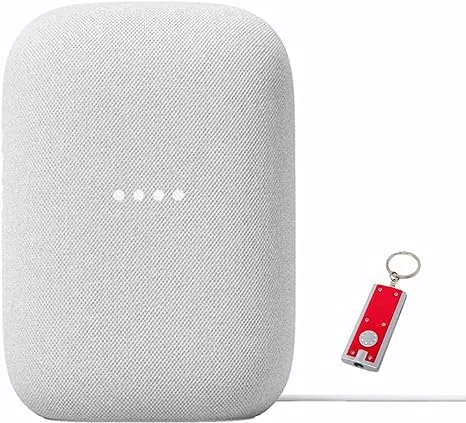
Another great option for you is the Google Audio Bluetooth Speaker with Keychain LED in Chalk – your ultimate companion for wireless music streaming and smart home connectivity, perfect for enhancing productivity and ambiance in office spaces. Here’s why it’s a game-changer for your workplace:
Wireless Music Streaming:
With the Google Audio Bluetooth Speaker, you can easily stream music wirelessly throughout your office, creating a dynamic and immersive audio experience that boosts creativity and focus.
Seamless Integration:
Create a cohesive audio ecosystem in your office by connecting Nest Audio with other Nest speakers and displays, Chromecast-enabled devices, or compatible speakers. The setup is quick and hassle-free, ensuring that your entire workspace is filled with rich, full sound.
Stay Connected:
Keep in touch with your colleagues effortlessly using the Nest Audio’s intercom feature. Simply say, “Hey Google,” to broadcast messages to every Nest speaker and display in the office, facilitating communication and collaboration across different rooms or departments.
Smart Assistant Functionality:
In addition to playing music, Nest Audio serves as a valuable assistant in the office. Stay updated on important information like weather forecasts, news updates, or sports scores by simply asking Google. Plus, with the included LED Keychain, you’ll always have a handy accessory to light up your workspace.
PROS
- Wireless Music Streaming.
- Seamless Integration.
- Rich, Full Sound.
- Smart Assistant Functionality.
- LED Keychain Included.
CONS
- Dependence on Wi-Fi Network.
- Size and Portability.
- Keychain LED Color May Vary.
Experience the convenience and versatility of the Google Audio Bluetooth Speaker in Chalk – the perfect addition to any office space, delivering superior sound quality and smart functionality to enhance productivity and foster a positive work environment.
4. Amazon Echo (4th Gen)
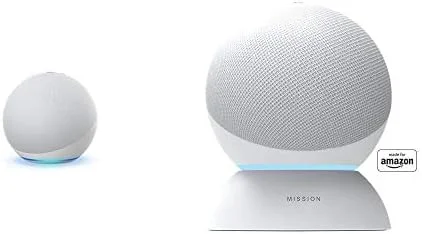
The Echo (4th Gen) bundle with “Made for Amazon” Battery Base for Echo in Glacier White – your all-in-one solution for powerful, portable smart home audio. Designed to elevate your office space, this bundle combines cutting-edge technology with a sleek design for a seamless audio experience. Here’s why it’s perfect for your workplace:
New Look, New Sound:
The Echo (4th Gen) delivers clear highs, dynamic mids, and deep bass for rich, detailed sound that automatically adapts to any room. Its modern design adds a touch of sophistication to any office environment while providing immersive audio for meetings, presentations, or background music.
Portability and Convenience:
With the included “Made for Amazon” Echo Battery Base, you can enjoy your music away from the power outlet, with an integrated battery lasting up to 5 hours. This allows you to bring the Echo wherever you need it in the office, whether it’s a conference room, break area, or workstation.
Voice Control Your Entertainment:
Stream songs from popular music services like Amazon Music, Apple Music, Spotify, SiriusXM, and more, or listen to radio stations, podcasts, and Audible audiobooks. With Alexa voice control, you can easily play music, answer questions, check the news, set alarms, and more, all hands-free.
Smart Home Made Simple:
The Echo (4th Gen) serves as a central hub for your smart home devices, allowing you to easily set up and control compatible Zigbee devices or Ring Smart Lighting products. With voice commands, you can adjust lights, locks, and sensors, enhancing productivity and efficiency in the office.
PROS
- Portable Smart Home Hub.
- High-Quality Audio.
- Voice Control Entertainment.
- Smart Home Integration.
- Sleek Design.
CONS
- Dependency on Wi-Fi.
- Limited Battery Life.
- Limited Compatibility.
Experience the convenience and versatility of the Echo (4th Gen) bundle with a “Made for Amazon” Battery Base for the Echo, and transform your office into a smart, connected workspace with powerful audio capabilities.
5. Sony SRS-XG300 X-Series
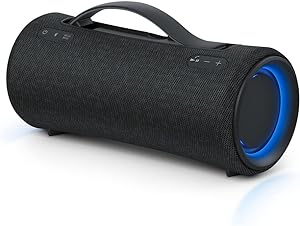
Another trusted brand is the Sony SRS-XG300 X-Series Wireless Portable Bluetooth Party Speaker – your ultimate companion for on-the-go entertainment. With its sleek design, robust features, and powerful sound, this speaker is designed to take your parties to the next level. Here’s why it’s a game-changer for your gatherings and office spaces:
Super-light, Portable Design:
The Sony SRS-XG300 features a compact, lightweight design with a retractable handle, making it easy to carry and transport wherever the party takes you.
IP67 Rated for Water and Dust Proof:
With an IP67 rating, this speaker is built to withstand water and dust, ensuring durability and reliability, even in outdoor environments.
X-Balanced Speakers for High-Quality Sound:
Experience power, clarity, and distortion-free sound with Sony’s X-Balanced speakers, delivering an immersive audio experience that fills any space.
Long-lasting Battery Life:
Enjoy up to 25 hours of continuous playback on a single charge, with quick charging capabilities to keep the music going all night long. Plus, personalize your sound control and ambiance with the Sony Music Center app and customizable ambient LED lighting.
PROS
- Durable and Portable.
- Long Battery Life.
- High-Quality Sound.
- Wireless Connectivity Options.
- Personalized Sound and Lighting.
CONS
- Heavyweight.
- Complexity of Apps.
- Limited Microphone Features.
With additional features like device charging via USB port, a microphone with echo-canceling technology, and compatibility with the Fiestable app for cool effects, the Sony SRS-XG300 X-Series Speaker is the ultimate party companion for any occasion.
6. Sonos Era 100
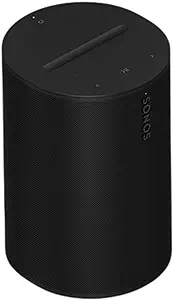
The Sonos Era 100 – Black – Wireless, Alexa Enabled Smart Speaker, is a revolutionary addition to your home audio setup. This compact yet powerful speaker combines cutting-edge technology with a sleek design to deliver an unparalleled listening experience. Here’s why it’s a must-have for your space:
Next-Gen Acoustic Architecture:
Powered by a 47% faster processor, the Sonos Era 100 features dual-tweeter acoustic architecture that produces detailed stereo separation, while a 25% larger mid-woofer deepens the bass, ensuring rich, immersive sound quality.
Versatile Placement Options:
Place this speaker anywhere and everywhere you want to listen. Its compact design fits beautifully on your bookshelf, kitchen counter, desk, or nightstand, allowing you to enjoy music wherever you are in your home.
Seamless Connectivity:
Stream from all your favorite services over WiFi, pair a Bluetooth device with the press of a button, or connect a turntable or other audio source using an auxiliary cable and the Sonos Line-In Adapter, offering versatile connectivity options to suit your preferences.
Easy Setup and Optimization:
Go from unboxing to unbelievable sound in just a few minutes. Simply plug in the power cable, connect your phone or tablet to WiFi, and open the Sonos app. With a tap in the app, Trueplay tuning technology analyzes the unique acoustics of your space and optimizes the speaker’s EQ, ensuring that all your content sounds just the way it should, no matter where you are in your home.
PROS
- Advanced Acoustic Architecture.
- Versatile Placement.
- Seamless Connectivity.
- Easy Setup.
- Smart Features.
CONS
- High Price.
- Dependency on WiFi.
- Lack of Battery Option.
Experience the Sonos Era 100 – Black – Wireless, Alexa Enabled Smart Speaker’s convenience and superior sound quality, elevate your listening experience to new heights.
7. Bose SoundLink Flex Bluetooth Speaker
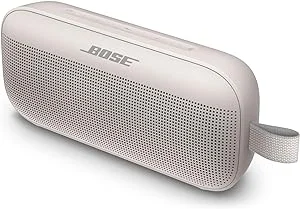
The Bose SoundLink Flex Bluetooth Speaker is a versatile companion for your music needs wherever you go. Aside from its long playtime, Here’s why it’s a must-have for your space:
State-of-Art Design:
Experience deep, clear, and immersive audio with exclusive technologies and a custom-engineered transducer, whether at home or on the go.
Possible Sound:
Proprietary Position Q technology ensures optimal sound quality in any orientation or environment, adapting automatically for the best listening experience.
Waterproof Wireless Speaker:
Rigorously tested to meet IP67 waterproof standards, this speaker is crafted with waterproof materials, floats in water, and is perfect for outdoor adventures.
Portable and Durable:
Resistant to water, dust, drops, and rust, the compact design makes it easy to carry and store. Plus, it’s built to withstand corrosion and UV light, ensuring longevity.
PROS
- High-Quality Sound.
- Waterproof Design.
- Portable and Durable.
- Long Battery Life.
- Built-in Microphone.
CONS
- Price.
- No Voice Feedback.
- Limited Connectivity.
With additional features like a rechargeable battery offering up to 12 hours of playtime, a built-in microphone for calls and voice assistants, and compatibility with the Bose Connect app for updates and customization, the Bose SoundLink Flex is your ultimate travel companion.
8. Bowers & Wilkins Zeppelin
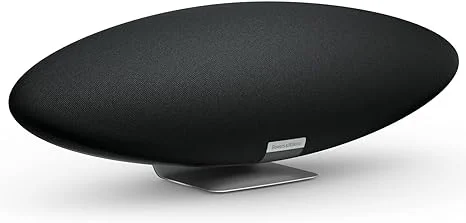
The Bowers & Wilkins Zeppelin Wireless Speaker, the epitome of audio excellence and stunning design. Crafted with precision and innovation, this speaker delivers a superior listening experience while adding a touch of elegance to any space. Here’s why the Zeppelin is a must-have for music enthusiasts:
Immersive Sound Experience:
Where form meets function, the Zeppelin features five premium drive units, including 2x 1” Double Dome Tweeters, 2x 3.5” FST Midrange drivers, and 1x 6” subwoofer. This configuration delivers spacious, room-filling stereo sound that brings your music to life.
Instant Access to Your Music:
Enjoy seamless streaming from Apple AirPlay 2, Bluetooth aptX Adaptive, and Spotify Connect, as well as access to a variety of music services through the Bowers & Wilkins Music App. Whether it’s TIDAL, Qobuz, Deezer, or Last.fm, Soundcloud, or others, you can enjoy your favorite tunes in up to 24-bit high-resolution quality.
Future-Proof Technology:
Zeppelin is built on an upgradable platform, ensuring compatibility with new services as they emerge. In 2022, Zeppelin will adopt multi-room capability, allowing you to share music from room to room with other Zeppelins or Bowers & Wilkins Formation range products.
Exquisite Design:
Zeppelin’s iconic design is instantly recognizable and can be proudly displayed on a shelf or mounted to a wall using the optional wall bracket (sold separately). Additionally, the speaker includes dimmable ambient lighting, which adds a touch of ambiance to any setting.
PROS
- High-quality audio.
- Upgradability.
- Versatile Connectivity.
- Built-In Alexa.
- Sleek Design.
CONS
- High-Price.
- Single Speaker Configuration.
- Dependency on Wi-Fi Network.
Driven by more than 55 years of delivering exceptional audio quality, Bowers & Wilkins continues to innovate with Zeppelin. Experience excellence in both sound and design with a speaker that sets the standard for premium audio.
9. KEF LSX
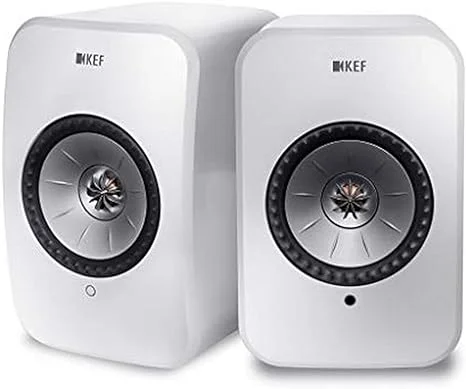
For a powerful and versatile audio solution that delivers stunning sound quality and seamless connectivity, look no further than KEF LSX Wireless Music System (White, Pair). Building upon the success of the KEF LS50 wireless, the LSX features advanced technology and elegant design elements. Here’s why it’s a game-changer for your home audio setup:
Exceptional Sound Quality:
With a 4″ Uni-Q driver and FEA-designed cabinet, the LSX delivers astoundingly clear sound over 160 degrees of coverage, ensuring an immersive listening experience with precise detail and depth.
Multiple Connectivity Options:
Connect wirelessly via dual-band Wi-Fi connectivity or Bluetooth 4.2 for convenient streaming from your favorite devices. Additionally, the LSX offers digital (Toslink) input and a 3.5 mm aux optical connection for versatile connectivity options.
Built-In Music Services:
Enjoy access to popular music services like Spotify and Tidal, allowing you to stream all your favorite tracks directly from the speakers without the need for additional devices.
Expandable Bass:
If you crave additional bass, the LSX can output to a connected subwoofer, providing enhanced low-end frequencies for a fuller sound experience. Control the output to the connected subwoofer easily through the included app.
PROS
- High-quality sound.
- Versatile Connectivity.
- Built-In Music Services.
- Expandable Bass.
- Sleek Design.
CONS
- High Price.
- Complex Setup.
- Dependence on Wi-Fi.
With its sleek design and a variety of finishes to choose from, including White, Black, Blue, Olive, or Red matte/cloth options, the KEF LSX Wireless Music System combines style and performance for a truly exceptional audio solution.
10. Sonos Five
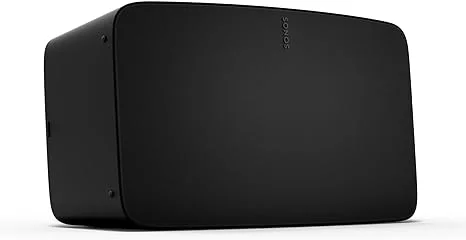
Last but not least is the Sonos Five – Black – Wireless HiFi Speaker, a powerhouse of audio excellence that takes your listening experience to new heights. Designed to deliver vividly clear, room-filling sound, the Sonos Five is meticulously tuned by renowned producer Giles Martin. Here are some standout features that make the Sonos Five a must-have for any music lover:
Immersive Sound Experience:
With its unrivaled acoustic design featuring three high-excursion woofers within a sealed architecture, the Sonos Five delivers deep, rich bass while eliminating reverb and echo, ensuring a truly immersive listening experience.
Ultra-Wide Soundstage:
Experience rich stereo sound and spatial extension with two precisely angled side tweeters and a center tweeter optimized for vocal playback. The result is a wide soundstage that fills the room with breathtaking clarity.
Smart Stereo Sound:
Whether you place a single speaker horizontally for stereo sound or pair two speakers in an upright position, the Sonos Five automatically adjusts to mono, providing detailed stereo separation and an even wider soundstage for an unparalleled listening experience.
Versatile Connectivity:
Connect your turntable, CD player, or other devices directly to the Sonos Five using the 3.5mm line-in port, expanding your audio options and ensuring seamless integration with your existing setup.
PROS
- Immersive Sound Quality.
- Deep Bass.
- Ultra-Wide Soundstage.
- Smart Stereo Sound.
- Versatile Connectivity.
CONS
- High Price.
- Size and Weight.
- Complex Setup.
With additional features like Trueplay for customized sound tuning and compatibility with the new generation of the Sonos app, the Sonos Five offers unparalleled versatility and performance. Elevate your home audio setup with the Sonos Five and immerse yourself in the music like never before.
It is important to note that the top 10 wireless speaker systems provided here are not ranked in any particular order. Each of these systems offers unique features and benefits tailored to different preferences and needs. When choosing the right wireless speaker system for your office space or home, consider factors such as sound quality, connectivity options, design, and budget to find the perfect fit for you.
Criteria for Selecting the Perfect Wireless Speaker System for Your Office
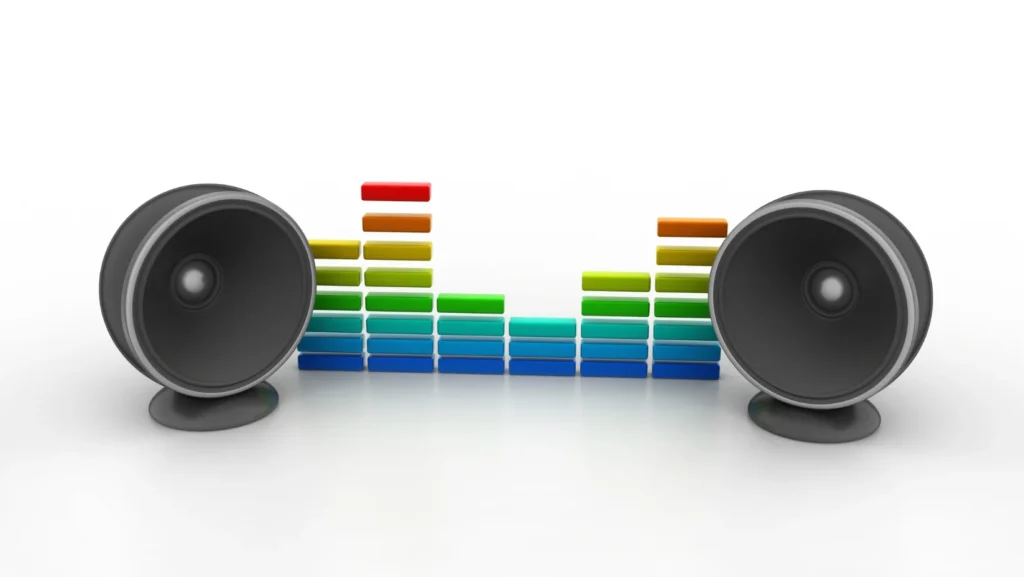
Selecting the perfect wireless speaker system for your office involves considering several important criteria to ensure that it meets your needs and enhances your workspace environment.
Here are some key factors to consider:
Sound Quality:
Look for speakers that offer high-quality audio performance, with clear, balanced sound across different frequencies. Consider the size of your office space and whether the speaker can fill the room with sound without distortion.
Connectivity Options:
Ensure that the wireless speaker system offers versatile connectivity options, including Bluetooth, Wi-Fi, and auxiliary inputs. This allows you to easily connect various devices such as smartphones, tablets, laptops, and desktop computers.
Ease of Use:
Opt for a speaker system that is easy to set up and operate. User-friendly features such as intuitive controls, seamless pairing, and compatibility with voice assistants can enhance the overall user experience.
Design and Aesthetics:
Consider the design and aesthetics of the speaker system to ensure that it complements your office decor and fits seamlessly into your workspace. Choose from a variety of styles, colors, and form factors to match your personal preferences.
Portability and Flexibility:
Depending on your office layout and workflow, you may prefer a portable speaker system that can be easily moved around or mounted in different locations. Consider factors such as size, weight, and battery life if portability is important to you.
Integration with Smart Devices:
If you use smart home or office automation systems, look for speakers that offer integration with popular platforms such as Amazon Alexa, Google Assistant, or Apple HomeKit. This allows you to control the speaker using voice commands and integrate it into your existing smart ecosystem.
Multiroom Capability:
If you have multiple rooms or zones within your office space, consider a speaker system that supports multiroom audio playback. This allows you to synchronize music playback across different speakers or create independent audio zones for different areas of your office.
Brand Reputation and Support:
Choose a wireless speaker system from a reputable brand known for quality products and excellent customer support. Read reviews, check warranty coverage, and consider factors such as software updates and ongoing support to ensure a positive ownership experience.
By considering these criteria, you can select the perfect wireless speaker system for your office that enhances productivity, fosters a pleasant work environment, and delivers exceptional audio performance for all your needs.
Frequently Asked Questions About Top 10 Wireless Speaker Systems for Flexibility in Office Spaces
Q: Can I connect multiple wireless speakers for a seamless audio experience in my office?
A: Yes, many wireless speaker systems offer multiroom capability, allowing you to connect and synchronize multiple speakers for a cohesive audio experience throughout your office space.
Q: How important is sound quality when selecting a wireless speaker system for the office?
A: Sound quality is crucial, especially in an office environment where clarity and balance are essential for meetings, presentations, and background music. Look for speakers that offer clear, balanced sound across different frequencies.
Q: Are wireless speaker systems easy to set up and operate in office settings?
A: Yes, most wireless speaker systems are designed for easy setup and operation, with intuitive controls and seamless pairing processes. Many also offer companion apps for simplified management and control.
Q: Can I integrate wireless speaker systems with my existing office automation or smart home systems?
A: Yes, many wireless speaker systems offer integration with popular smart home platforms such as Amazon Alexa, Google Assistant, and Apple HomeKit, allowing you to control the speakers using voice commands and integrate them into your existing smart ecosystem.
Q: Are there wireless speaker systems specifically designed for larger office spaces?
A: Yes, some wireless speaker systems are designed to deliver robust sound performance in larger office spaces. Look for speakers with powerful drivers, wide sound dispersion, and multiroom capability to accommodate larger areas.
Final Thoughts
Selecting the right wireless speaker system for your office space is crucial for enhancing productivity, fostering collaboration, and creating a pleasant work environment. Whether you’re looking for a compact speaker for individual workstations or a multiroom audio solution for larger office spaces, there’s a wireless speaker system to suit your needs.
With these top 10 wireless speaker systems, flexibility in office spaces becomes more than just a possibility—it becomes a seamless and immersive reality.




